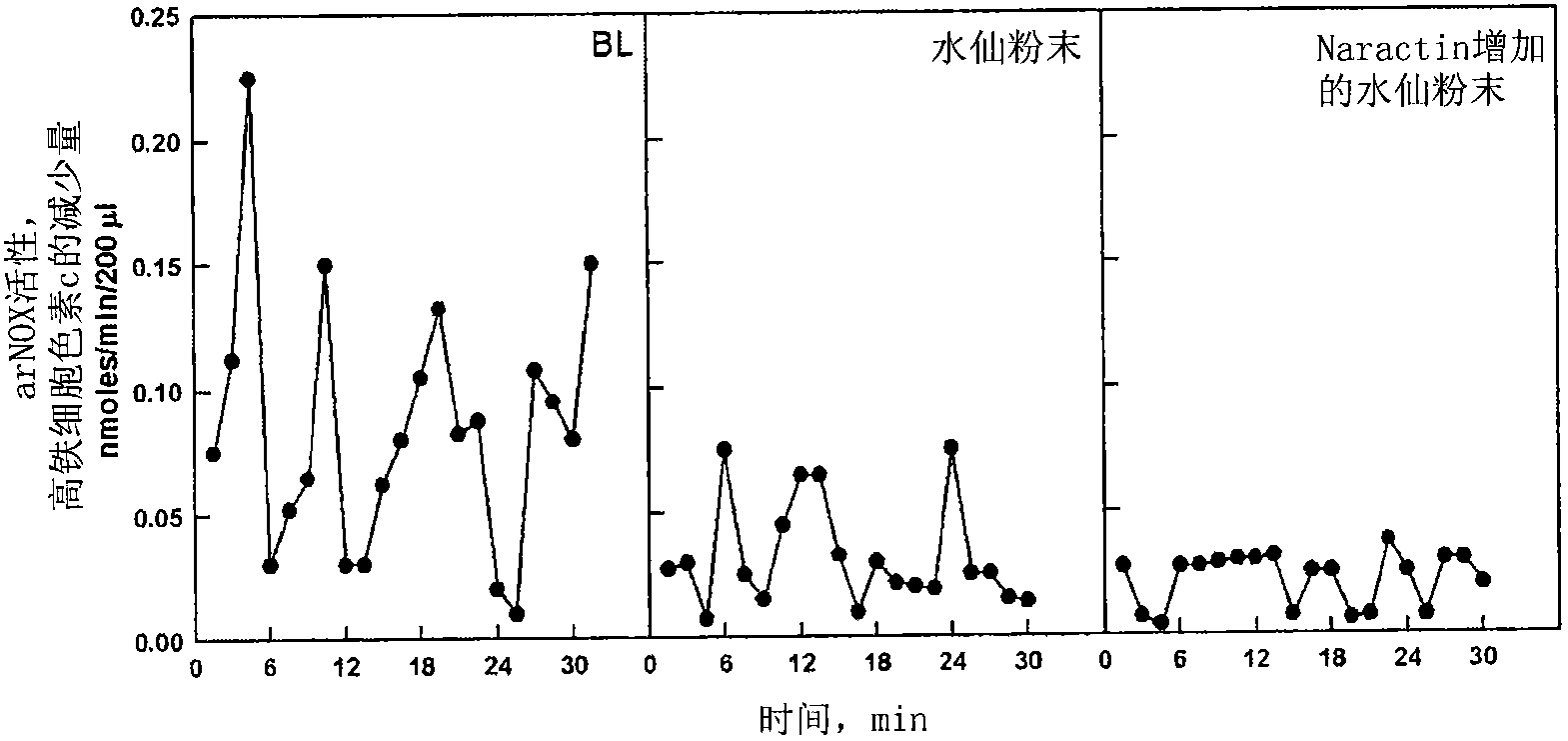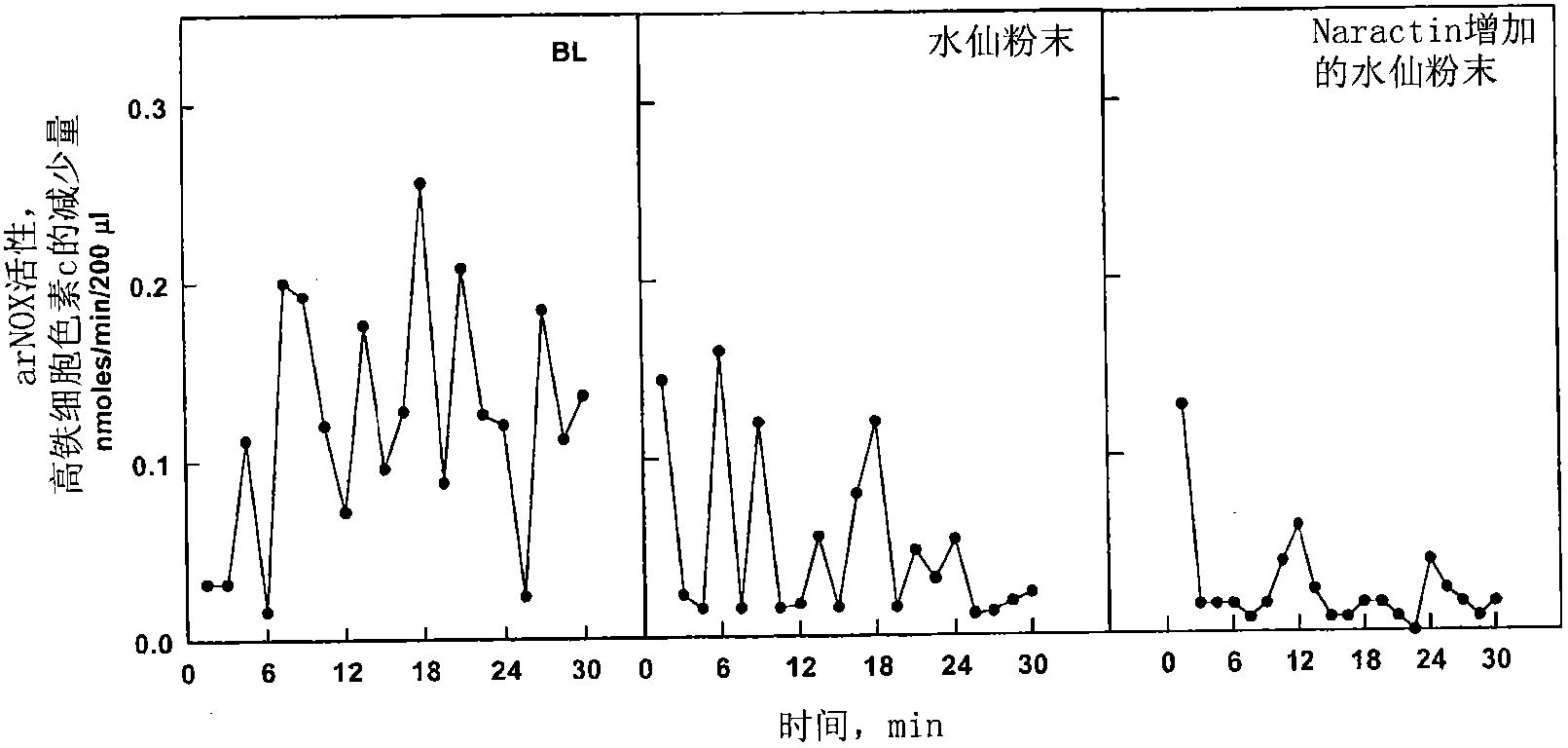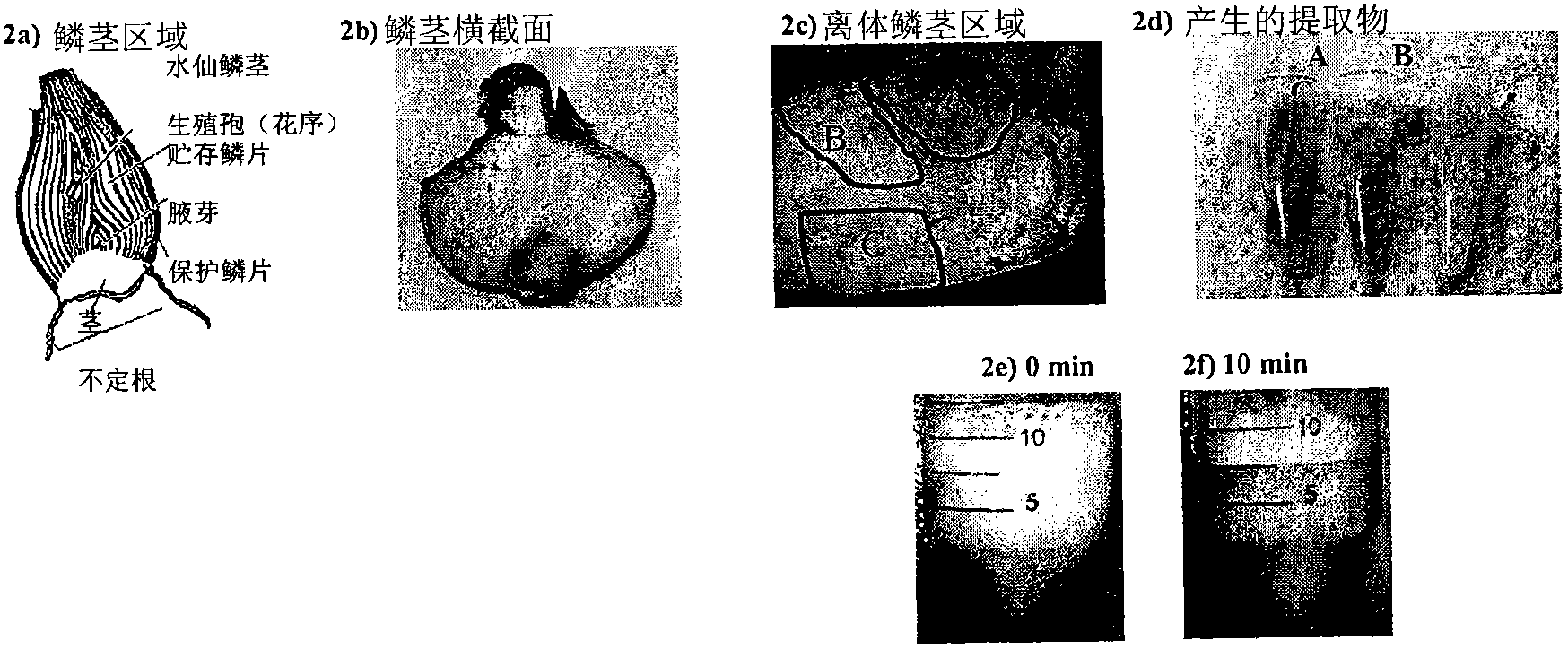Compositions comprising ARNOX-inhibitors for the inhibition of reactive oxygen species
A kind of composition, inhibitor technology, applied in the field of natural product extract
- Summary
- Abstract
- Description
- Claims
- Application Information
AI Technical Summary
Problems solved by technology
Method used
Image
Examples
Embodiment 1
[0118] Characterization of Narcissus Extract
[0119]To test the hypothesis that narcissus may have arNOX inhibitors, bulbs of pure white narcissus (Narcissus tazetta) were obtained from a supplier (Brent and Becky's Bulbs, Gloucester, VA). Aqueous and alcoholic extracts that inhibited arNOX activity and enhanced inhibition when combined with low activity Narcissus powder (Xian Aojing Science and Technology Development CO., LTD, Xian, China) were prepared. The enhancement of powder from narcissus bulbs with SHAM (Sigma-Aldrich, St. Louis, MO) is shown in Figure Ia. The ability of naractins to enhance arNOX inhibition was determined by following the same protocol, but applying salicin (Sigma-Aldrich) and narcissus powder (Xian Aojing Science and Technology Development CO., LTD, Xian, China) from flowers to enhance arNOX Inhibition, Figure 1b. Comparison was made to similar extracts of Narcissus pseudo-narcissus (Daffodils) and Narcissus jonquilla (Jonquilla) extracts lacking ...
Embodiment 2
[0122] Identification of arNOX inhibitors
[0123] To answer the question of whether the salicylic acid moiety that stabilizes salicyl hydroxamate is important for the inhibition of arNOX activity, salicylic acid (Naractin 2) was tested as an inhibitor of salivary arNOX activity in a 72-year-old male and found to inhibit arNOX activity ( Figure 8 ). Salicylic acid also appears red when reacted with ferric iron, similar to that exhibited by hydroxamates. Salicylates and / or aspirin did not inhibit arNOX activity. Aqueous extracts of willow bark, a natural source of salicylates, were tested and found to also inhibit arNOX. The glycoside salicin (Naractin 3), the major salicylate of willow bark, was subsequently also tested and found to be active at concentrations 10-fold lower than SHAM (Naractin 1) or salicylic acid (Naractin 2) ( Figure 9 ).
Embodiment 3
[0125] Identification of Salicylate-Producing Plants
[0126]Research was conducted to identify plants that are natural producers of salicylates. The study was conducted using the Natural Products database (available at napralert.org) created by Prof. Norman Farnsworth at the University of Illinois in Chicago. The study identified the following salicylate-producing plants in different identified tissues: A. chinense (Alangiaceae) Chinese dried leaves, A. chinense (Illiciaceae) Japanese dried leaves (cult), A. platanifolium (Illiciaceae) French dried leaf, A.platanifolium var.platanifolium (Illiciaceae) Japanese dried leaf, A.platanifolium var.trilobum (Illiciaceae) Japanese dried leaf, A.platanifolium var.trilobum (Illicaceae) Japanese dried leaf, A. premnifolium (Acarinaeceae) Japanese leaf, A. premnifolium (Illicaceae) Japanese stem, Aspergillus niger (hyphomycetes) Korean culture filtrate, betula alba (Birch family (betulaceae) German dry bark, Bupleurum falcatum (Apiacea...
PUM
 Login to View More
Login to View More Abstract
Description
Claims
Application Information
 Login to View More
Login to View More - R&D
- Intellectual Property
- Life Sciences
- Materials
- Tech Scout
- Unparalleled Data Quality
- Higher Quality Content
- 60% Fewer Hallucinations
Browse by: Latest US Patents, China's latest patents, Technical Efficacy Thesaurus, Application Domain, Technology Topic, Popular Technical Reports.
© 2025 PatSnap. All rights reserved.Legal|Privacy policy|Modern Slavery Act Transparency Statement|Sitemap|About US| Contact US: help@patsnap.com



